
Updated: February 09, 2024
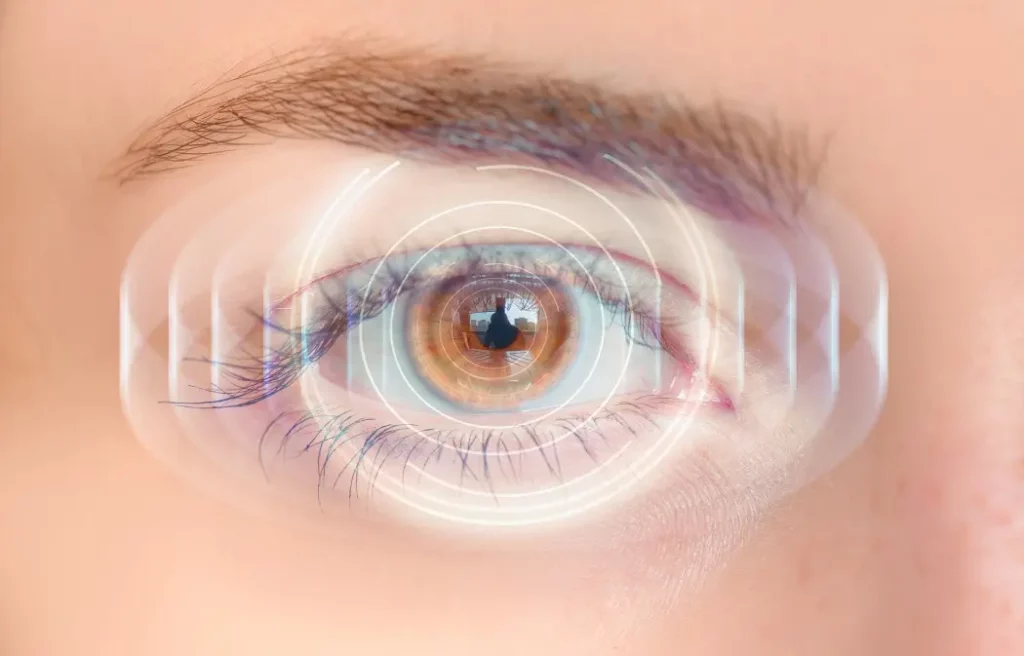 In the realm of advanced vision correction procedures, two prominent options, SMILE (Small Incision Lenticule Extraction) and ICL (Implantable Collamer Lens), stand out. While both are refractive surgeries designed to fix an eye prescription, they differ significantly in their approach. ICL involves implanting a specially designed lens, offering a reversible solution for vision correction. On the other hand, SMILE employs laser technology for a minimally invasive procedure. This comparison delves into the intricacies of these techniques, shedding light on their respective merits and considerations for individuals seeking improved uncorrected vision and possibly limited to no need for spectacles or contacts.
In the realm of advanced vision correction procedures, two prominent options, SMILE (Small Incision Lenticule Extraction) and ICL (Implantable Collamer Lens), stand out. While both are refractive surgeries designed to fix an eye prescription, they differ significantly in their approach. ICL involves implanting a specially designed lens, offering a reversible solution for vision correction. On the other hand, SMILE employs laser technology for a minimally invasive procedure. This comparison delves into the intricacies of these techniques, shedding light on their respective merits and considerations for individuals seeking improved uncorrected vision and possibly limited to no need for spectacles or contacts.
EVO ICL (Implantable Collamer Lens) eye surgery is a revolutionary vision correction procedure designed to address refractive errors such as myopia (nearsightedness) and astigmatism. Unlike traditional laser-based surgeries, the EVO ICL procedure involves the implantation of a specially crafted lens directly into the eye, behind the iris and in front of the eye’s natural lens, providing clear vision without altering the cornea’s natural shape. EVO ICL surgery is known for its effectiveness in treating high refractive errors, providing excellent visual outcomes, and preserving corneal integrity, making it a popular choice for those seeking long-term vision improvement.
SMILE (Small Incision Lenticule Extraction) eye surgery is a minimally invasive laser vision correction procedure designed to treat myopia and astigmatism. During SMILE, a femtosecond laser precisely creates a small, disc-shaped lenticule within the cornea, which is then removed through a small incision, reshaping the cornea and correcting the refractive error. Unlike LASIK, SMILE requires a smaller incision, reducing the risk of dry eyes and preserving more corneal tissue. This outpatient procedure offers quick recovery, minimal discomfort, and high patient satisfaction.
SMILE (Small Incision Lenticule Extraction) and ICL (Implantable Collamer Lens) are distinct surgical techniques for vision correction, each with unique characteristics.
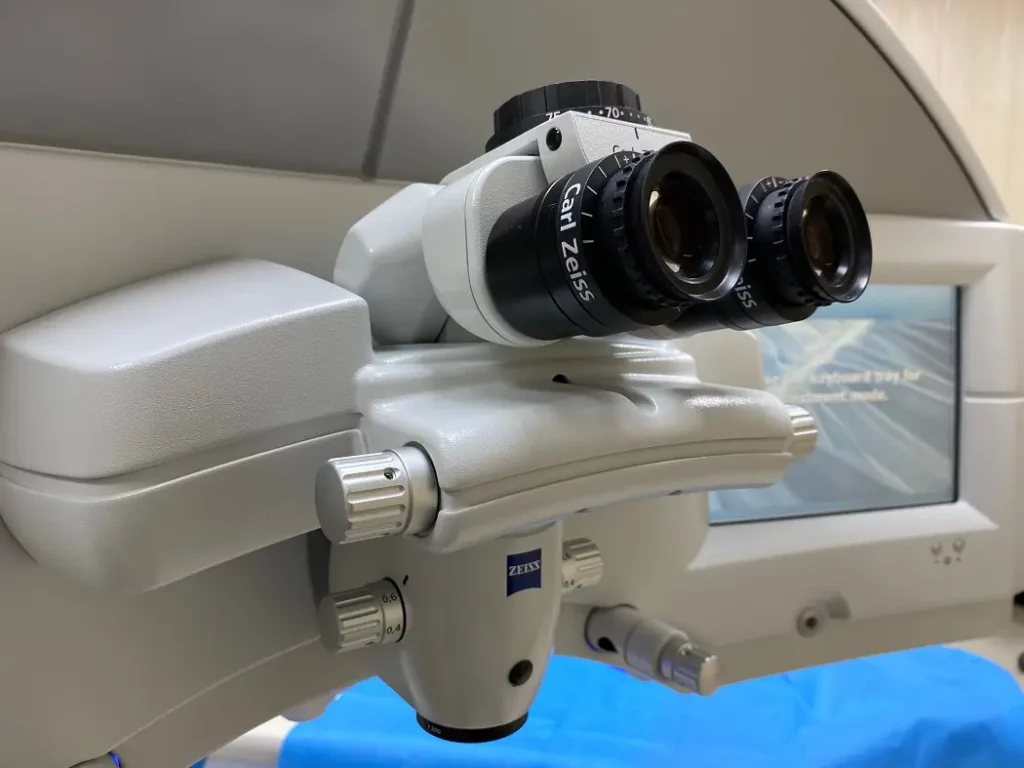
SMILE involves a femtosecond laser creating a lenticule within the cornea, which is then removed through a small incision, reshaping the cornea to correct myopia and astigmatism. This technique boasts a smaller incision compared to LASIK, reducing the risk of dry eyes and maintaining more corneal tissue integrity. This gentle approach offers an excellent safety profile and a quick recovery with minimal discomfort.
ICL entails implanting a phakic (meaning in addition to your natural crystalline lens) intraocular lens behind the iris and in front of the natural lens, providing an alternative solution for vision correction, especially for patients with higher refractive error. ICL is notable for its reversibility and adjustability. This technique preserves the cornea’s natural shape and avoids altering its tissue, offering a clear advantage for certain patients.
While SMILE primarily addresses corneal refractive issues, ICL is more versatile and applicable to a broader range of refractive errors. The choice between SMILE and ICL depends on individual factors such as the nature of the refractive error, corneal thickness, and patient preferences. Both techniques have demonstrated efficacy in providing patients with improved vision and reducing dependence on corrective lenses, contributing to the diverse landscape of modern refractive surgery.
Determining your candidacy for ICL or SMILE involves considering various factors related to a patient’s eye health, refractive error, and personal preferences.
Ideal Candidates for EVO ICL Eye Surgery:
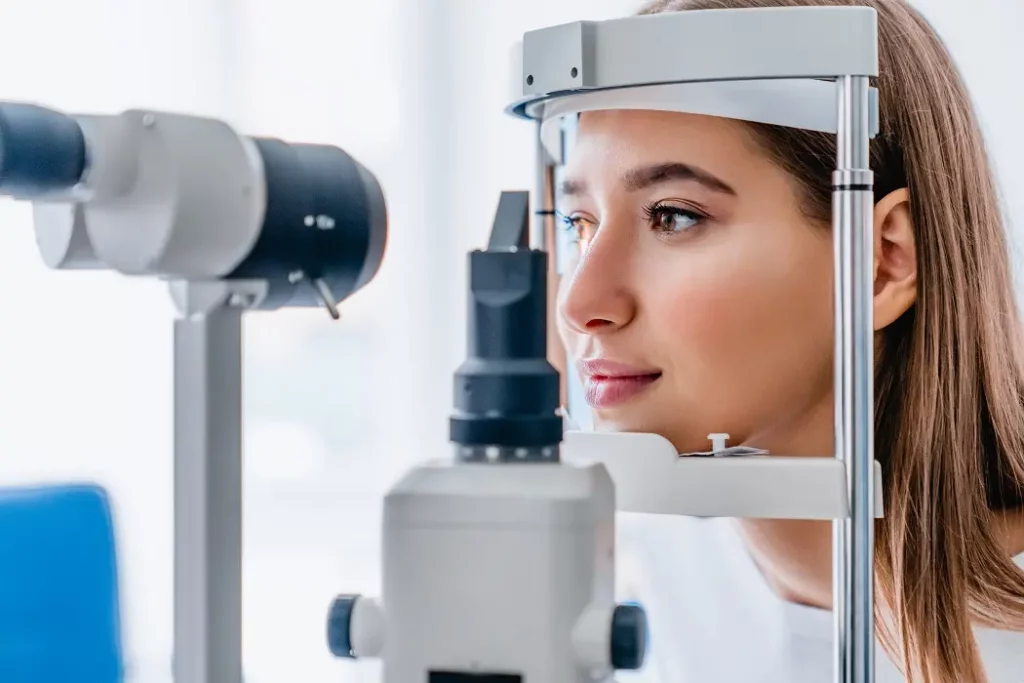
Ideal Candidates for SMILE Eye Surgery:
Ultimately, the choice between EVO ICL vision correction and SMILE depends on the specific characteristics of the patient’s eyes and their preferences. A comprehensive eye examination and consultation with an experienced refractive surgeon’s office are essential for determining the best option for achieving optimal vision correction and satisfaction.
EVO ICL procedures typically involve higher costs due to the use of specialized lenses and the more involved surgery to implant it into the eye. The average cost of implantable collamer lens implantation in the United States is between $ 4,000 – $6,500 per eye. Discover Vision provides transparent pricing details for ICL candidates during the consultation visit. For detailed cost information, you can visit Discover Vision’s ICL pricing page.
On average, patients can expect to pay between $2,000 and $3,500 per eye for SMILE depending on the amount of refractive error being addressed. During your refractive consultation at Discover Vision For specific pricing details and a breakdown of associated costs, or refer to Discover Vision’s SMILE pricing page.
While financial considerations are important, patients should also factor in the long-term benefits, risks, and suitability of each procedure and compare to on-going annual costs of glasses and contact lenses when making a decision about vision correction.
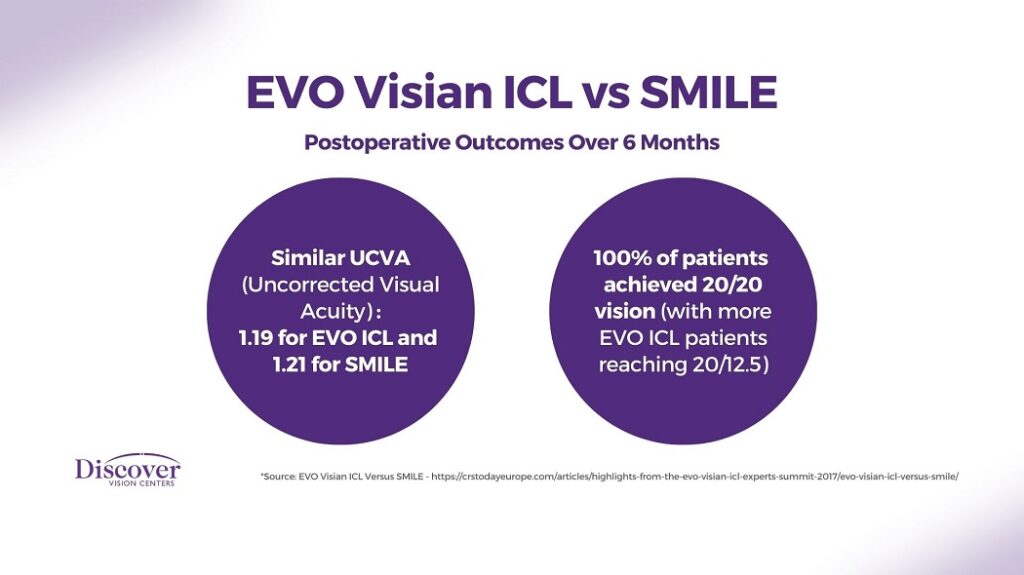
Following ICL surgery, patients typically experience a quick and comfortable recovery. Discomfort is minimal, and refractive outcomes are almost immediate. Some may notice the implantable contact lens enhances vision within a day, with a full recovery expected within a week. It is common to experience temporary light sensitivity and night glare during the initial healing period.
SMILE surgery offers a swift recovery as well. Most patients can return to their routine activities the next day. Discomfort is generally mild and resolves within four hours. Vision outcomes are very reliable and patients typically have excellent unaided vision within a day or two.
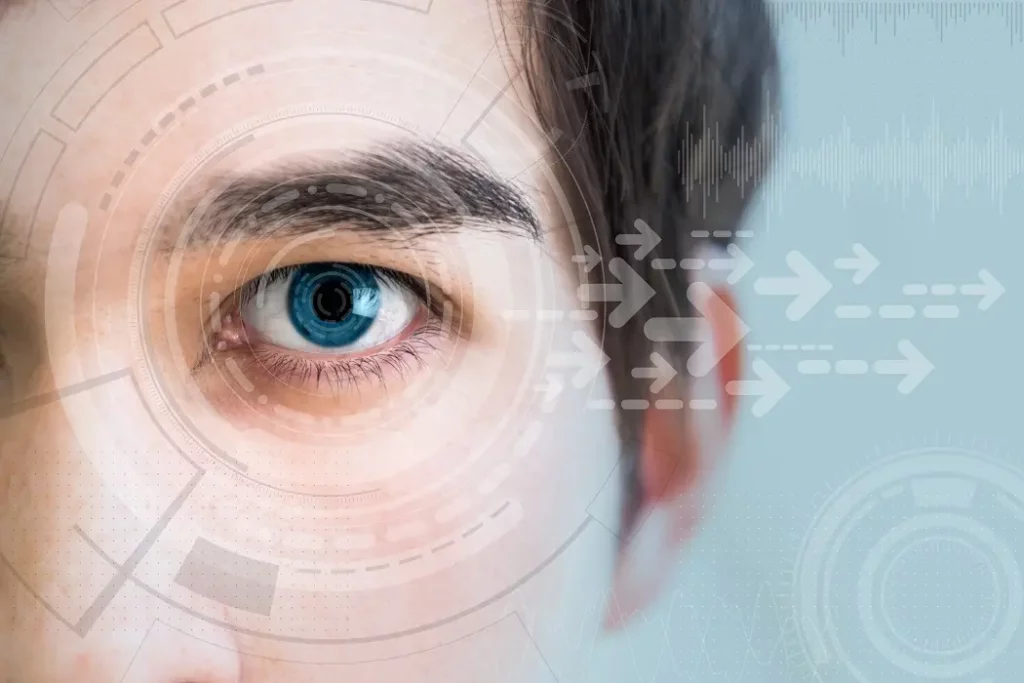
Choosing between ICL and SMILE involves careful consideration of various factors related to individual preferences and refractive errors. Here’s a guide to help tailor your decision:
Factors to Consider:
Ultimately, consulting with an experienced refractive surgeon and discussing your specific refractive error and lifestyle considerations will guide you in making a well-informed decision.
When deciding between SMILE and ICL for vision correction, consider factors like refractive error, corneal thickness, and reversibility. ICL is ideal for high refractive errors, while SMILE suits mild to moderate myopia. Discover Vision Centers provides consultations with doctors that can help you decide which refractive surgery is the best option for you. To set up your consultation, feel free to call us at (816)478-1230 or click here to schedule online. Take the first step towards clearer vision today.